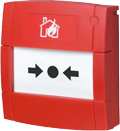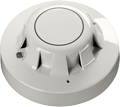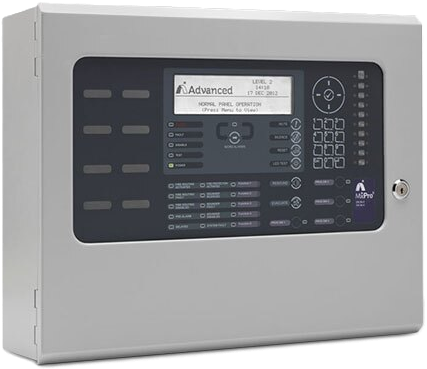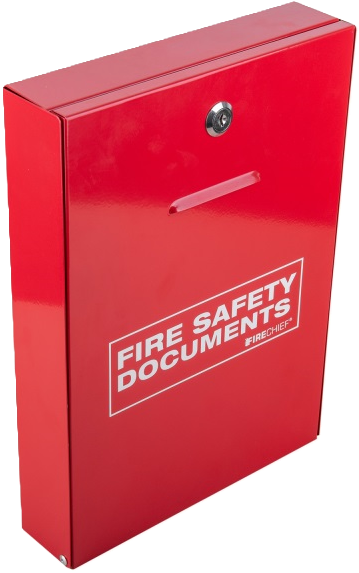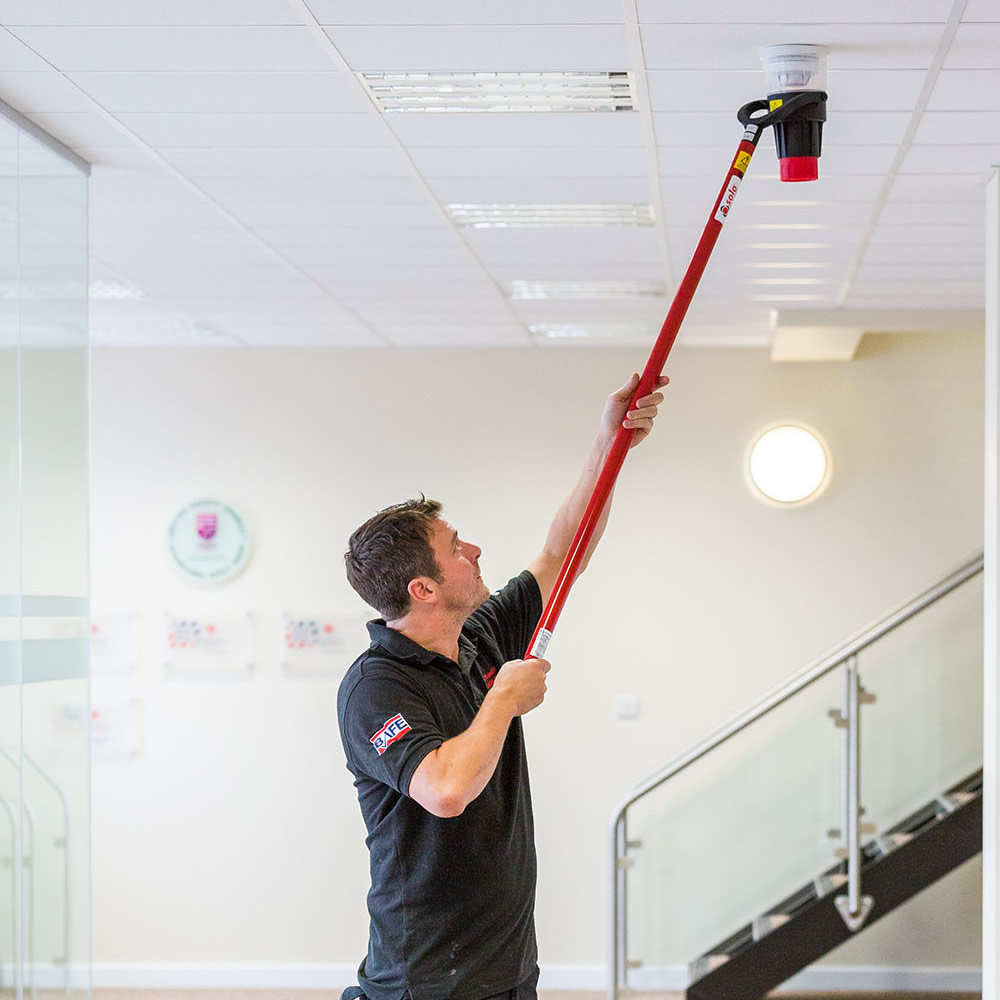-
Contact
Sales & Customer Service
0800 612 6537 support@safelincs.co.uk Live ChatDelivery Enquiries
0800 077 6149 - Resources
Fire & Safety Solutions
CALL OUR TEAM NOW 0800 612 6537
Lines open today 8am - 6pm
Free Delivery
on 100s of Products
Secure Payments
with our fast checkout
Live Customer Chat
Available Now
30 Day Accounts
for Public Sector
5 Star Customer Feedback
A Summary of the BS 5839-1:2017
BS 5839-1:2017 Fire Detection and Fire Alarm Systems for Buildings – Part 1: Code of Practice for Design, Installation, Commissioning and Maintenance of Systems in Non-Domestic Premises
The code of practice in the above British Standards Publication has been developed in line with current national building regulations in respect of both new-build and existing non-domestic premises.
This entry level guide to the Standard aims to address some of the main issues concerning fire detection and fire alarm systems, in respect of general and design queries.
Table of Contents
- Why Might I Need a Fire Detection & Alarm System?
- What Are Fire Detection and Fire Alarm Systems?
- What is Meant by "Categories of System"?
- What Are The Main Design Considerations for a Fire Alarm System?
- System Type
- System Components
- Monitoring, Integrity and Reliability of Circuits
- Detection Zones
- Alarm Zones
- Communication With The Fire and Rescue Service
- Alarm Warnings for People With Impaired Hearing
- Manual Call Points
- Types of Fire Detector and Their Selection
- Control and Indicating Equipment (CIE)
- What Are The Main Installation Issues?
- What Happens Once Installation is Complete?
- User's Responsibilities and Premises Management
- What Are the Changes Between The 2013 and 2017 Revisions?
Why Might I Need a Fire Detection / Fire Alarm System?
As noted in the Foreword (pp iv-vi), "national building regulations require fire detection and fire alarm systems to be installed in many buildings at the time of construction. In addition, legislation requires that, where necessary to safeguard relevant persons in case of fire, existing premises are equipped with "appropriate fire detection and fire alarm systems" (p v).
Annex A (pp 130-131) gives a table of various types of non-domestic premises including, inter alia, common places of work (e.g. shops, offices, factories and warehouses), hotels, schools, hospitals, places of assembly (e.g. cinemas, theatres and churches), residential care homes, shopping centres, etc. This is for guidance only, however, and it is important to note that the list is not exhaustive and that any "reference to particular types of premises in Annex A does not necessarily mean that all such premises are required by law to have such systems installed" (p v-vi).
For any premises, and as a general rule, best practice in fire safety should always begin with a fire risk assessment, which has the additional benefit of determining whether a fire detection / fire alarm system is required and, if so, what type of system should be installed.
What Are Fire Detection and Fire Alarm Systems?
There are many different types of fire detection / fire alarm system, ranging from the most basic, manually operated, stand-alone devices through to highly sophisticated, digitally controlled networks. It all depends on the size and nature of the premises to be protected. In the context of BS 5839-1, which also applies to extensions and alterations to existing systems, "the term fire detection and fire alarm systems ... includes systems that range from those comprising only one or two manual call points and sounders to complex networked systems that incorporate a large number of automatic fire detectors, manual call points and sounders, connected to numerous inter-communicating control and indicating panels" (p 1).
It should be noted that this part of BS 5839 does not cover systems whose primary function is to extinguish or control fire. Voice alarm systems, systems combining fire alarm functions with non-fire related ones, audible or visual way-guidance systems designed to complement the fire alarm function, and public emergency call systems (999 or 112) also fall outside the remit of this publication. Pages 3-10 of the Standard contain a useful glossary of relevant terms and definitions, from "addressable system" through to "zone plan", followed by a commentary on the various categories of system (pp 11-13). Referring once again to Annex A, these categories of system are linked to specific types of premises, so it may be helpful to consider what they actually involve.
What is Meant by "Categories of System"?
BS 5839-1:2017, the code of practice for designing, installing, commissioning, and maintaining fire detection and alarm systems in non-domestic buildings, contains recommendations for the locations of fire alarm system components based on the objective the system should fulfil - known as Categories. These Categories are L and M for systems designed to protect life and Category P for those intended to protect property. It is perfectly acceptable, and very common, for a fire alarm system installed in a building to incorporate a mixture of Categories.
Category L and M - Life Protection
Category M
Providing the least responsive level of protection, Category M simply requires manual call points (MCPs) installed throughout a site. This Category is not often used for entire premises, though is well suited to specific situations such as workshops or factories where the occupants are likely to notice a fire quickly or automatic detection would not be reliable. Category M is usually used for specialist areas of a building in addition to other Categories. All Category M installations need to have alarm devices - sounders, beacons, bells, voice alarms, etc - throughout the site.
New in the 2017 revision, the fitting of protective covers on MCPs is no longer deemed a variation and is instead now recommended (p 47).
Category L
Category L systems are designed to protect life and thus focus on escape routes and areas of the building with a high fire risk. They can be thought of as cumulative, with each increasing the level of protection provided by the previous Category. All Category L installations should have alarm devices - sounders, beacons, bells, voice alarms, etc - throughout the building regardless of their requirements for detection devices.
New in the 2017 revision, multi-sensor detectors, providing they conform to BS EN 54-7, are no longer deemed a variation when used in escape routes (p 19-20, 51-55).
Category L4
Building on Category M, L4 has MCPs throughout the building for occupants to manually identify a fire while automatic fire detection (AFD) should be installed along escape routes including stairwells. AFDs used for Category L4 systems should be smoke detectors - specifically, optical point detectors or aspirating smoke detectors (ASD) that rely on optical smoke sensors.
Category L3
In addition to MCPs throughout and optical AFD in escape routes, Category L3 stipulates AFD be installed in all rooms, corridors and compartments that open onto escape routes. These rooms may use any of the common detector types, unlike escape routes, so appropriate detectors should be chosen based on the purpose and fire risks within them. However, the standard does recommend that certain specialist detectors such as flame or video should only be used in these rooms in addition to common detectors.
Category L2
While the fire risks in rooms opening onto escape routes should be taken into consideration for L3 systems, this can often be done by common sense or in discussion with the client. L2 systems, however, require that a thorough Fire Risk Assessment (FRA) be carried out by a competent person to identify areas of high fire risk. Appropriate AFD should then be used in the identified locations in addition to the requirements of L3.
Category L1
L1 systems are the "ultimate" in life protection as they recommend both manual call points (MCPs) and automatic fire detection (AFD) be installed throughout the entire premises. For the AFD installed in addition to L2 requirements care should be taken to choose the detector types according to not only the fire risks in each room, but also the persons at risk. For example, heat detectors should not be the primary detector type in bedrooms as they will not provide quick enough warning to protect the occupant's life.
Category L5
Similar to L2, this Category can only be designed and installed based on the findings of a thorough FRA - except that L5 should not actually be attempted by designers or installers unless specified in the FRA. Category L5 is for meeting specialist fire safety objectives, often in variation to the recommendations where strict adherence would not be possible. Such systems could include automatically closing metal shutters on a shopfront to contain the fire away from a shared concourse, or adding optical point detectors to bedrooms not adjoining the escape route in addition to an L4 system. L5 systems should be designed in conjunction with, and agreed by, relevant authorities before they can be signed off for installation.
Category L5/M
This should be considered a combination of a full Category M system (MCPs and alarm devices throughout) with additional AFD or other specialised systems in specified locations outside the scope of the other Categories but with the intention of protecting life.
Category P - Property Protection
Although defined as a system designed to protect property, most Category P systems will provide some protection of life cover and will be used in addition to Category L requirements for certain reasons. Category P systems are usually added in response to assessments made by insurance companies.
Category P1
This type of system is designed to protect the entire building, and thus requires AFD throughout the premises. While not dependent on a thorough fire risk assessment (FRA), a FRA is helpful for designing P1 systems, as appropriate detectors will need to be installed in each room to cover the specific risks present. However, as it is focused on the protection of property, alarm devices (sounders, beacons, bells, voice alarms, etc) are only required where specified - in an on-site security office, for example.
Category P1/M
The addition of /M does not stipulate that "some" MCP are necessary, it indicates that a full Category M system should be combined with a full Category P1 system. This means there should be AFD, MCPs, and alarm devices installed throughout the entire building.
Category P2
Category P2 requires AFDs in high risk areas, only. Category P2 systems are commonly used when combining with a life protection system other than Category M. For example, a building may have Category L3 protection for escape routes and adjoining rooms, with an additional AFD in the server room that is not directly connected to an escape route.
Category P2/M
These systems require AFDs as specified by P2 with MCPs and alarm devices throughout the building as per a standalone Category M installation.
What Are The Main Design Considerations for an Appropriate Fire Detection / Fire Alarm System?
Section 2 (pp 17-91) of the Standard covers the various aspects of the design process, divided into 22 sub-sections (8-29). It starts from the definition of the system category that is most appropriate for a particular building and its fire safety requirements and concludes with electrical earthing. Each sub-section is presented in a clear and easy to follow format, with a general commentary on the particular design aspect being considered, followed by a list of recommendations. These recommendations may give specific advice or refer to other relevant British Standards.
An entry level guide such as this cannot cover system design in detail so what follows is an indication of some of the main points to consider.
System Type
We have already looked at relating automatic system categories to particular types of premises in the context of protection of life (L) or property (P), or a combination of the two, and noted that manual (M) systems frequently have a role to play in these. However, it is useful to bear in mind the comment on p 17 that "the appropriate extent of automatic fire detection is normally determined by a fire risk assessment, rather than a rigid application of a system category to every building of a specific type or occupancy".
System Components
It is important that system components, e.g. manual call points, detectors, CIE (control and indicating equipment) and other fire alarm devices, conform to relevant British Standards or Harmonised European Standards and have undergone type testing to these standards. Furthermore, it is advised that all components used have been certified under a recognized product certification scheme, i.e. third-party certification of product conformity to the relevant standard(s) (p 21).
Monitoring, Integrity and Reliability of Circuits External to Control Equipment
The design should limit the effect of faults in and / or work on the system. A fault (but not fire) signal needs to be given at the CIE in the event of any failure in the critical signal path, which comprises all the components and interconnections between every fire alarm initiation point (whether manual or automatic) and the input terminals of each fire alarm device, as well as transmission equipment within the premises for routing of signals to an Alarm Receiving Centre (ARC) (p 23).
Detection Zones
Sub-division of a building into detection zones, which are typically protected by a number of manual call points and / or automatic detectors, is recommended for all but the smallest of premises. This is to ensure that those responding to the alarm are directed to the actual location of the fire and is a recommendation even for premises with addressable systems (p 28).
Alarm Zones
Many premises have a simple evacuation procedure in the event of fire: when a manual call point or automatic detector is activated, an alarm sounds throughout the building to tell everyone to leave. In some, more complex buildings, however, a phased evacuation policy might be in place, in which case separate alarm zones might be required. In such situations, it is recommended, inter alia, that the boundaries of every alarm zone (other than external walls) are of fire-resisting construction. As the use of Alarm Zones implies that occupants in certain areas of a building will not be expected to evacuate immediately, the configuration of Alarm Zones might require approval by relevant authorities (pp 30-31).
Communication With The Fire and Rescue Service
In order to derive maximum benefit from the fire alarm / fire detection system, it is important that the emergency response services can be alerted as quickly as possible should fire break out. This can be achieved in a number of ways, depending on the category of system installed. In the case of manual systems, which rely on human intervention, a telephone call will suffice. Since the objective of Category L systems is the evacuation of occupants, manual summoning of emergency services will often suffice. Unless occupied at all times, the objective of property protection is unlikely to be satisfied without means of automatic transmission of alarm signals (p 32).
Mains power supplies, cable types and cable routing for alarm routing equipment need not be regarded as a variation in the case they do not conform with the recommendations of BS 5839-1:2017. However, standby battery capacity and any cable(s) between the CIE and the alarm routing equipment must conform to the recommendations (p 33).
Audible Alarm Systems / Visual Alarm Systems / Alarm Warnings for People With Impaired Hearing
It is essential that alarm signals are sufficient in nature and extent to warn all those for whom they are intended. In some situations, e.g. for occupants of a building who have a hearing impairment, it may be necessary to supplement the audible alarm with a visual one, although it is not normally recommended that only a visual alert is used. In premises with sleeping accommodation, e.g. residential care homes, additional, tactile devices, which can be placed under pillows or mattresses and are connected to the fire alarm system, may also be appropriate. The Standard also gives recommendations relating to portable equipment designed to be carried by staff or impaired occupants, usually controlled by radio frequency such as a pager (pp 35-43).
Manual Call Points
Manual call points need to be prominently sited, readily distinguishable from non-fire alarm call points, and distributed such that, from any point in the building, it is impossible to leave the storey or building itself without passing one. They must also be sufficient in number to ensure that the time between the discovery of a fire and the alarm being sounded is as short as possible. All MCPs should be of Type A under BS EN 54-11, meaning that "the change to the alarm condition is automatic ... when the frangible element is broken or displaced" (p 47). New in the 2017 revision, the fitting of protective covers on MCPs is no longer deemed a variation and is instead now recommended (p 47).
Types of Fire Detector and Their Selection
Fire detectors are designed to detect one or more of the four main components of a fire: heat; smoke; combustion gas (e.g. carbon monoxide); and infrared and / or ultraviolet radiation (i.e. flames). As their name suggests, multi-sensor fire detectors contain more than one sensor, each of which responds to a different physical and / or chemical characteristic of fire. The final choice of detector for a particular building will be governed by three main considerations: the speed of detection / response required, as determined by the fire risk assessment / fire safety objectives; the need to minimize false alarms; and the nature of the fire hazard. Other issues such as cost and maintenance requirements may also be significant. It is important that all relevant factors are considered at the design stage as there is no one type of fire detector that is suitable for all applications (pp 49-56).
New in the 2017 revision:
- Multi-sensor detectors (conforming to BS EN 54-7) are no longer deemed a variation when used in Category L3 or L4 systems or when used in escape routes for Category L1 systems (p 19-20, 51-55)
- Video fire detectors are specifically addressed in a separate sub-clause, grouping text which was previously spread throughout the standard (p51)
NB The spacing and siting of fire automatic fire detectors is a context-dependent, technical matter for system designers. It is covered in some detail in sub-section 22 of the Standard (pp 56-71).
New in the 2017 revision, for Clause 22.9 and Table 3 it is now recommended that that the specified maximum ceiling heights should only be used as guidance for vertical structures such as lift shafts and stairwells.
Control and Indicating Equipment (CIE); Networked Systems
Three main functions are performed by centralized CIE: automatic monitoring and control of circuits external to the equipment and the supply of power to them; indication and location of fire / fault signals and their location; and manual controls to enable actions such as routine testing and resetting of the system. The detailed recommendations (pp 72-74) apply to the siting of CIE and the facilities provided for (i) visual indication of fire signals and (ii) control of the system.
In respect of networked systems, the functions of the CIE are not centralized in one location, but are distributed amongst a number of "sub-panels" that are located remotely from each other and interconnected by means of a network that serves as a data highway. Some may act just as "data gathering" panels, while others can be fully functional control and indicating panels with a "stand alone" capability. This means they will continue to operate normally even if the communications link between the sub-panels fails (pp 74-76).
The remainder of Section 2 on design considerations (pp 76-93) covers issues such as power supplies to the system; cables, wiring and other interconnections of the components in a system; radio-linked systems; and electromagnetic compatibility with other electronic equipment (e.g. mobile phones) in respect of both the design and installation. The final sub-section (29) concerns electrical earthing. Again, this is technical information for the benefit of the designer and installer, with particular attention drawn to maintenance issues and the need to ensure the adequacy of earthing / protection against shock from exposed metal parts.
NB although British Standards themselves are only recommendations, not law, it is a legal requirement for CIE to have a standby power supply of sufficient duration and enforcers / inspectors will most likely refer to BS 5839-1.
What Are The Main Installation Issues?
Many fire detection / fire alarm systems are highly complex and sophisticated, exhibiting and benefiting from the cutting edge of digital technology, and it is not within the remit of a basic guide such as this to debate the details of the installation process. Apart, perhaps, from the most basic of systems (e.g. one or two manually operated, stand-alone call points in a small, single-storey building), installation is a specialist undertaking and will vary according to the unique characteristics of a particular set of premises.
Limitation of False Alarms and Unwanted Fire Alarm Signals
It is vital that the selection and siting of each of the fire alarm devices in a system, whether manual, automatic or a combination of both, are such that the possibility of false alarms (Section 3, p 91-103) is limited as much as possible: for example, smoke detectors should never be fitted in kitchens or bathrooms. Pages 98–99 of the Standard give an overview of the considerations when using point and optical beam smoke detectors, which should be fundamental to the design process, but offers an example of the type of issue which might be picked up and flagged to the designer / user at the installation stage.
As a general rule in respect of any design anomalies that may surface during installation of a fire detection and fire alarm system, although the Standard makes it clear that, unless the installer is also the designer, "the identification of design shortcomings is not generally the responsibility of an installer", best practice dictates that "if the installer is aware of such shortcomings, particularly those arising from features of the building that might not have been known to the designer, they be drawn to the attention of the designer, user or purchaser" (p 104).
Responsibility for Compliance
It is important to ensure that, prior to the installation of a fire detection and fire alarm system, one organisation has accepted responsibility for compliance with the relevant section of BS 5839-1, i.e. Section 4: Installation, p 104-108. The Standard emphasises this point because it is possible for more than one party to be involved in the process of design through to installation, commissioning and final handover: for example, following on from the fire safety risk assessment, an independent designer may work up the system specifications and then feed them through to another organisation, e.g. a specialist fire alarm or electrical installation contractor, which is to be responsible for supplying and installing the system; or, even in situations where the entire project from start to finish has been commissioned through a single, specialist contractor, the actual installation work could well be sub-contracted out.
What Happens Once Installation is Complete?
Pages 109-116 of the Standard cover the commissioning / handover of a fire detection and fire alarm system, which completes the process from initial survey and design through to final signing off of the system as fit for purpose. There are several stages in the post-installation phase, which can be summarised as follows:
Commissioning
The commissioning process involves the thorough testing of the installation to the recommendations of the Standard and to the designer's requirements (i.e. system specification). The work must be carried out by a "competent person", i.e. one who possesses the relevant current training, experience and capability to perform the task in accordance with all the relevant drawings and reference materials (p 4, 109).
While not generally the responsibility of the commissioning engineer to ensure the conformity of the system's design or installation to BS 5839-1, as the purpose of commissioning is to ensure the installation was performed to an adequate level and that the system operates correctly as designed, in practice it may be difficult to ensure the system complies in full with all recommendations of Section 2 until the time of commissioning. For example, ensuring the number and distribution of alarm sounders is sufficient for Clause 16.2 or assessing structural features which the designer was not aware of (p 109).
Documentation
Part of the commissioning process involves ensuring that adequate records and all other relevant documentation have been provided to the end user or purchaser of the fire detection and fire alarm system. Of particular importance are accurate "as-fitted" drawings of the installed system and system-specific operation and maintenance manuals. Other requisite documentation includes: certificates for the design, installation and commissioning of the system; all relevant records, e.g. any agreed variations on the original system design specifications; and a log book for recording all system events, e.g. fire alarm / fault signals, routine maintenance visits, etc. Annex F (p 144-146) of the Standard offers a useful log book template while Annex G (p 147-155) contains model certificates.
Certification
Once a system has been commissioned, certificates must be provided for each of the three separate processes: design, installation and commissioning. Certification can be carried out by a single or multiple organisations but, in all cases, "it is essential that the person who signs these certificates is competent to verify whether the recommendations of this Standard in respect of the process to which the certificate refers have, or have not, been satisfied" (p 113).
Once the certification process has been satisfactorily completed, the system will be formally handed over to the user / purchaser. At this point, it is important that the organisation bearing contractual responsibility for the system issues a certificate of acceptance to the purchaser, for completion by them. Pages 113-114 of the Standard cover the recommendations that apply at this critical stage in the proceedings.
Annex G (p 147-155) offers model certificates for all stages of fire detection and fire alarm system work, covering design, installation, commissioning, acceptance, inspection / servicing, and modification. There is also a model verification certificate, confirming overall system compliance with the recommendations of the Standard, which would become relevant should the purchaser or user commission an independent audit of the fire detection and fire alarm system. This usually occurs with larger, more complex installations and is an optional undertaking.
Once the final stages of handover, including certification, have been completed, responsibility for the day-to-day running and maintenance of the system passes to the management of the premises in which it has been installed. There are several aspects to this function, detailed recommendations for which are given in Section 6: Maintenance (pp 117-127) of the Standard. We consider some of the main issues below.
Maintaining The System: What is Involved?
No matter how technologically advanced a fire detection and fire alarm system might be with state-of-the-art self-monitoring and automatic fault detection features, there will always be the need for human observation and intervention to ensure its continuous smooth running and optimum performance.
There are three main reasons for routine maintenance and testing:
- To identify any faults signalled and take the appropriate action to rectify them;
- To ensure there have been no major failures of the system, either as a whole or in part;
- To familiarise occupants of the building with the fire alarm signal(s).
As such, it is important for the premises management to institute a schedule of system testing, which can be sub-divided into weekly and monthly routines. Details of all tests should be recorded in the system log book (p 129, Annex F).
Weekly Routine
The Standard makes five detailed recommendations in respect of weekly testing by the user (p 117), which in summary are:
- The operation of a manual call point during normal working hours;
- This test to be carried out at approximately the same time each week;
- Additional tests to be made at least once a month for any employees not usually present during the normal weekly test;
- In systems with multiple manual call points, a different one to be tested each week, so that all are eventually included in the schedule of testing over a period of time;
- The routine test time should not normally exceed one minute, so that the occupants of the premises can learn to distinguish between this weekly alarm and an actual fire alarm.
In respect of voice alarm systems, the Standard recommends that these are tested weekly in accordance with BS 5839-8.
Monthly Routine
The Standard applies two detailed recommendations for monthly testing by the user (p 118), which can be summarised as follows:
- If the standby power supply to the system includes an automatically started emergency generator, this should be tested monthly;
- If the standby power supply is provided by vented batteries, these should be inspected visually. Furthermore all vented batteries and their connections should be examined on a quarterly basis (i.e. every three months) by a person competent in battery installation and maintenance technology.
Inspection and Servicing
Over and above the weekly and monthly test routines, it is important for regular inspection and servicing of the system to be carried out, in order to identify and rectify any faults, including false alarm problems. The inspection should also ensure that the user is notified of any changes made to the actual fabric of the building – e.g. extensions, alterations or remedial work – that might have been made in the meantime that have affected the system in any way.. Changes in use and / or occupancy levels of a building can also have a detrimental effect on the protection offered by existing fire protection and fire alarm systems so any such factors must also be taken into consideration during the inspection process. The recommended period between successive inspection and servicing visits should not exceed six months – failure to implement this recommendation will result in the system not being compliant with BS 5839-1, with no allowance for variation. Because of the specialist nature of the work, inspections are usually contracted out to a fire alarm service organisation, whose competence can be assured by third-party certification.
Functions included in the periodic inspection and testing of the system include, inter alia, an examination of the log book, to include follow-up action on any faults recorded, and a visual inspection of all the manual call points, automatic fire detectors and fire alarm devices, with particular regard to any changes in building structure, occupancy levels and / or use, as noted above. Pages 119-120 of the Standard apply detailed recommendations to the various aspects of periodic system inspection and testing, with recommendations in respect of additional tasks that should be carried out annually (pp 120-123). As this is a labour-intensive undertaking, it is noted that some elements of the work can be spread over two or more service visits during each twelve-month period (p 123).
NB under Clause 45.3 (p 119) the Standard recommends that all types of detectors be tested in such a way that the stimulus they are designed to measure are capable of passing unhindered from the area protected by each detector to their sensing chamber/element. Tests which merely verify a detector is capable of sampling the atmosphere already in contact with them do not comply with BS 5839-1.
New in the 2017 revision, specific recommendations for the testing of multi-sensor detectors have been added as Clause 45.4.j.
In respect of non-routine attention to the system (pp 123-127), there are several scenarios that can arise and to which the Standard applies detailed recommendations. These range, inter alia, from the appointment of a new servicing organisation (which will necessitate a special inspection of the system) through fault repair and system modifications to inspection and test of the system following any fire.
User's Responsibilities and Premises Management: Who Does What?
A fire detection and fire alarm system is designed to protect life and / or property, as discussed in part 1 of this entry-level guide to the Standard. In order to fulfil this function, it is vital that maintenance, inspection and testing of the system are carried out on a regular, scheduled basis.
It is a complex process that can involve several different parties, so the Standard recommends that the system user appoints "a single, named member of the premises management to supervise all matters pertaining to the fire detection and fire alarm system". This places responsibility firmly in the hands of one individual, whose role is "to ensure that the system is tested and maintained in accordance with the recommendations of this part [Section 7: User's responsibilities] of BS 5839" (p 128).
These responsibilities include, inter alia: the keeping of appropriate system records and all relevant documentation; ensuring that all relevant occupants of the protected premises are aware of any specific role and / or responsibility assigned to them in respect of the fire detection and fire alarm system; and that the system itself is protected from any development that might negatively impact on the standard of protection it offers and / or contribute to the incidence of false alarms.
The log book is a key document and, as well as the details of the manager / supervisor to whom responsibility for the fire detection and fire alarm system has been delegated, should contain a record of all the events that concern the system, whether these occurrences were scheduled or not (e.g. routine maintenance visits, test signals, fault signals, etc). This comprehensive information can be valuable to whoever services the system and might also provide evidence of compliance with certain aspects of fire safety legislation, should such need arise (p 129).
What Are the Changes Between The BS 5839-1: 2013 and BS 5839-1: 2017 Fire Alarm System Standards?
In 2017, the fire alarm system Standard was updated, with several key changes. As a responsible person, it is essential to ensure that the property you manage is compliant with up-to-date regulations where required. Non-compliance can lead to prosecution, and puts building users at risk.
- The 2017 update has been adapted to account for changes to other major fire safety Standards, including the BS EN 54 series of Standards for fire detection and fire alarm systems, and BS 9999 for fire safety in commercial buildings
- Updates to the 2017 version have been written to provide clarifications around connections to Alarm Receiving Centres
- From 2017, Call Point Covers are now recommended to help prevent false alarms; previously installation of covers was a deviation from Standard
- In addition to these changes, the new Standard also provides additional guidance for:
- The use of multi-sensor detectors
- The use of voice alarm systems
- Employees working at night time so they can recognize the alarms
- New technology for fire detectors
- Fire detection and fire alarm system inspections
More detail on the changes made in the updated Standard are available on the BSI website.
(doc:513 V1.0). Our articles are reviewed regularly. However, any changes made to standards or legislation following the review date will not have been considered. Please note that we provide abridged, easy-to-understand guidance. To make detailed decisions about your fire safety provisions, you might require further advice or need to consult the full standards and legislation.




























